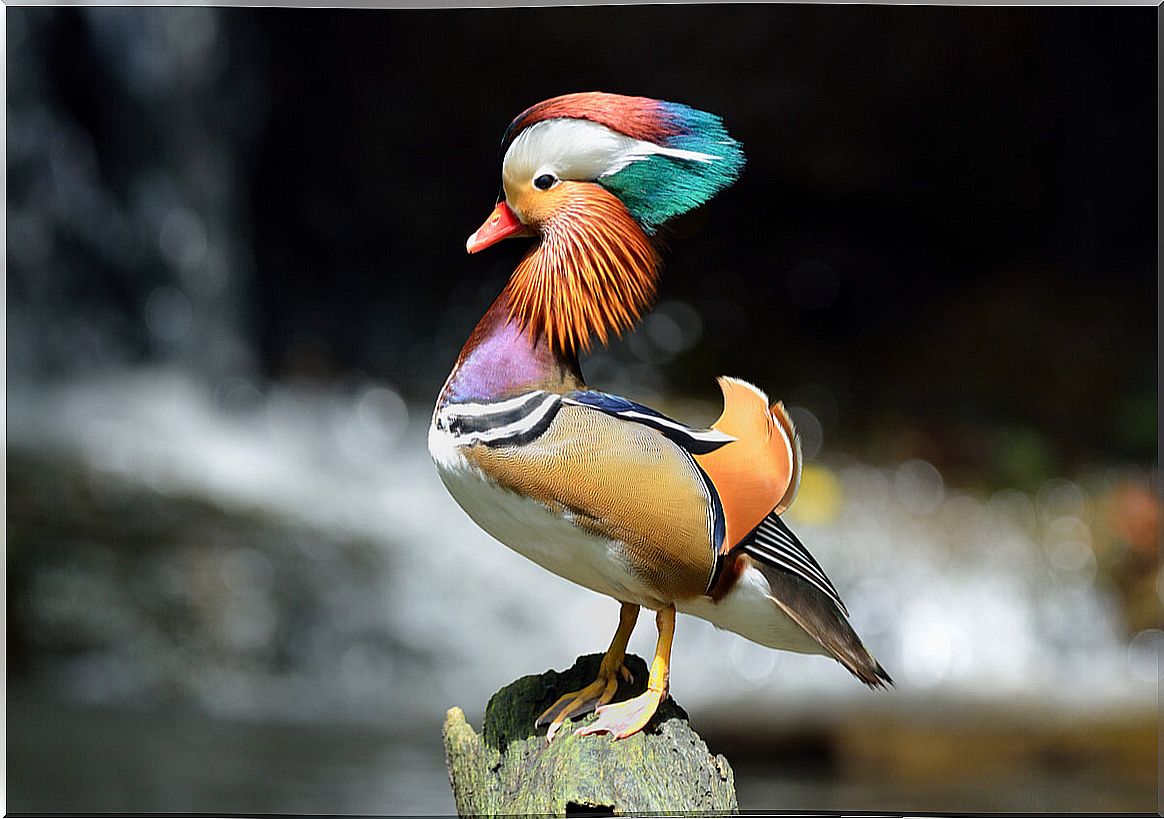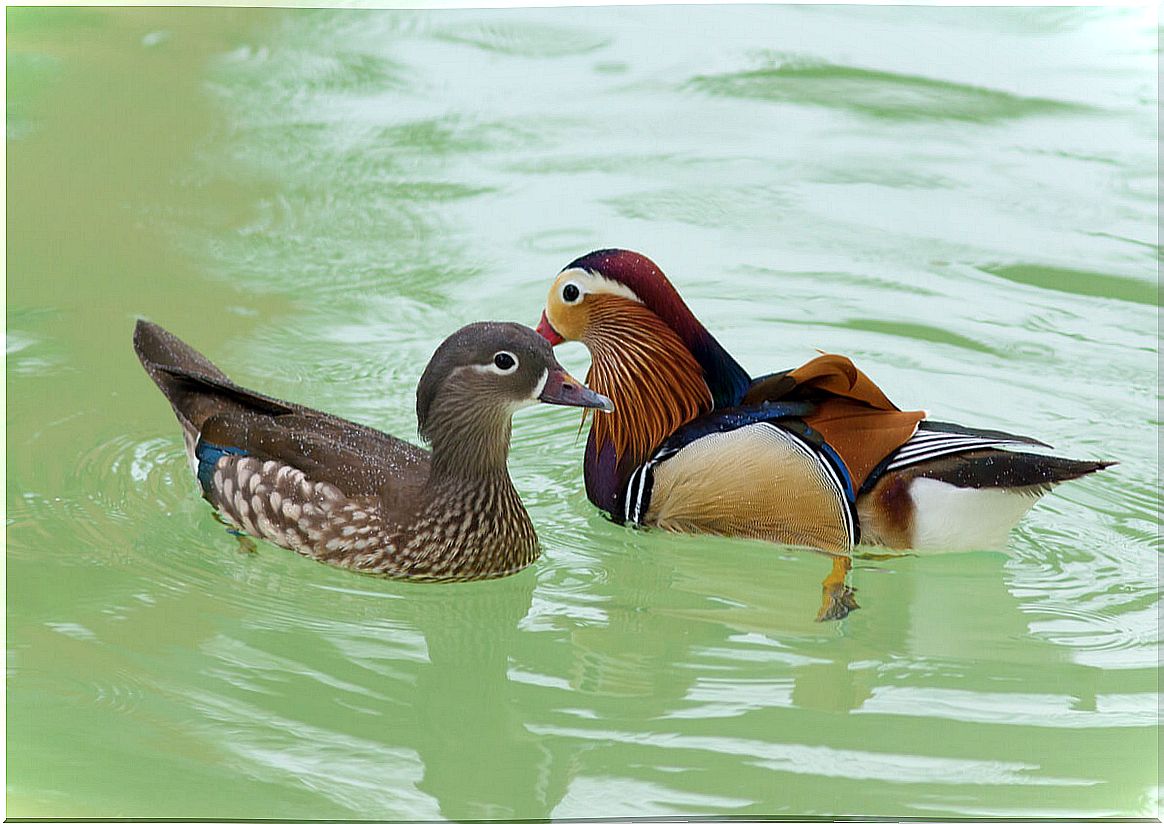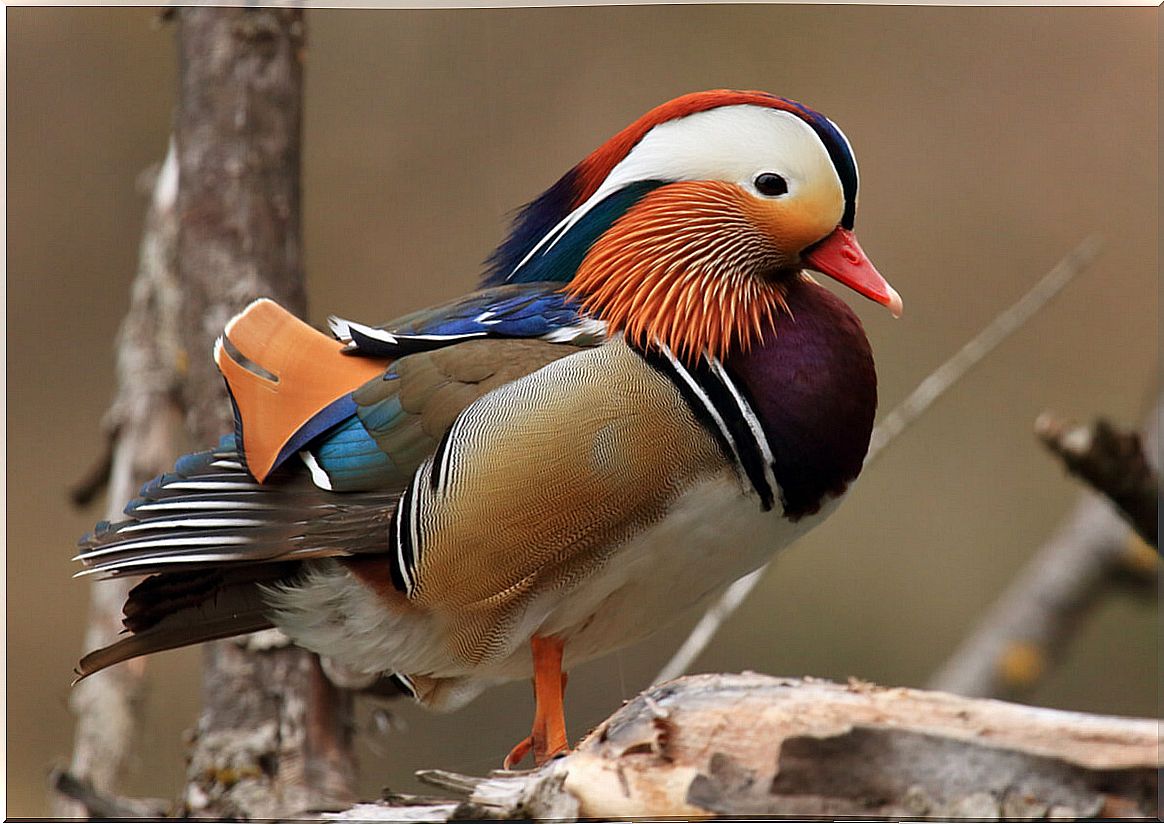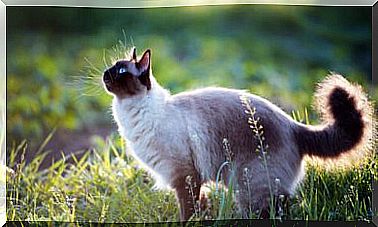The Mandarin Duck: A Kind Of Bright Colors

Nature never ceases to amaze us with its beauty and the Mandarin duck is the living example of this. In these lines we introduce you to a majestic bird with fascinating colors that, without a doubt, has earned a space on its own merits in the culture of East Asia.
The Mandarin Duck ( Aix galericulata ) is a bird native to China, Japan, and Siberia. Even so, due to the impressive colors displayed by the males, this species has been introduced in various parts of Europe, especially in parks and reserves. If you want to know more about this beautiful and fascinating animal, keep reading.
Characteristics of the mandarin duck
The Mandarin duck is a species included in the Anseriformes taxon , more specifically in the Anatidae family , where the common ducks known to all are found and many other species.
Here are some striking facts about the morphology of the species. Some of its most notable features are the following:
- Elegant and with a robust constitution, this bird can measure up to 45 centimeters in length.
- This species shows an evident sexual dimorphism: males have a red bill, a pronounced crest that spreads between white and red colors from the base of the eyes and a series of patterns with very intense tones. Red, dark brown, brownish-brown, and bluish-green dominate the animal’s plumage.
- Females, on the other hand, are much less conspicuous, with white patterns surrounding the eyes and an overall brown color.
- There are several mutations that use this beautiful bird as a base. Some ducks are crosses between mandarins and other genetically related species.
As a curiosity, it should be noted that male Mandarin ducks do not always have this beautiful coloration. According to National Geographic magazine, when the reproductive period ends – April or May – the males suffer a fall of feathers that are replaced by others much less showy, very similar to those of the female (eclipse plumage).

Habitat and food
As we have already said in previous lines, Mandarin ducks are native to China, Japan and Siberia, although they have been introduced in various parts of Europe. It should be noted that a total of 7000 pairs are estimated in Great Britain, but the largest European population center is located in Berlin (Germany).
These birds feed mainly on land, pecking at those elements that attract their attention. The diet of the Mandarin duck is based mainly on vegetables and seeds, but it can also include snails, insects and small fish. Thus, we can consider this species as omnivorous.
Despite its wonderful bearing, this species is by no means untouchable. Eagles, dogs, minks, and other medium-sized vertebrates prey on Mandarin duck individuals unceremoniously. Hunting of human origin is also a tangible problem, as hunters sometimes mistake these birds for other foodstuffs and accidentally shoot them.
State of conservation
According to the International Union for Conservation of Nature (IUCN), the species is not threatened today, but its natural populations are experiencing certain declines. For example, the destruction of their natural habitats has led to the reduction of specimens in Russia and China, where fewer than 1,000 pairs are estimated.
Fortunately, in Japan the numbers are more stable, with about 5000 total pairs. The fact that the species has been introduced to Europe has also turned out to be positive as, as a result, it is estimated that there are between 65,000-66,000 individuals worldwide.
The mandarin duck in culture
It is interesting to know that, in Korean culture, Mandarin ducks are a symbol of peace, fidelity and healthy offspring. For this reason, a pair of these ducks carved out of wood is often a highly valued bridal gift at traditional weddings.
Beyond the popular romanticization of the species, the reality is that male mandarin ducks are not very good parents. The males remain with the female during the 28-33 days of incubation of the eggs but, once they hatch, it will be the mother who will have to raise the offspring.

In summary, we can say that the Mandarin duck is a beautiful and fascinating animal, but that the males do not have the stunning coloration for which they are known throughout the year and that, surely, they are not as committed to their partner as they seem. .
Even so, this is one of the few examples of the introduction of species that has gone well, as these ducks have adapted to European environments without posing any problem for their ecosystems.









